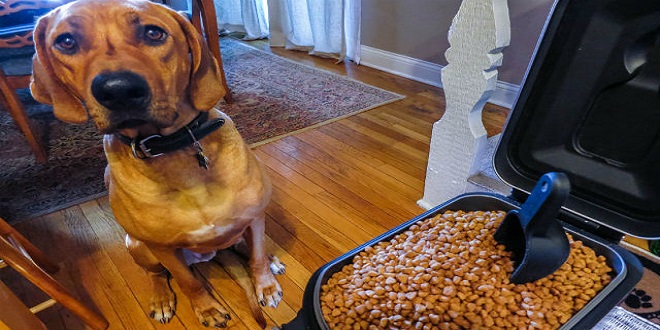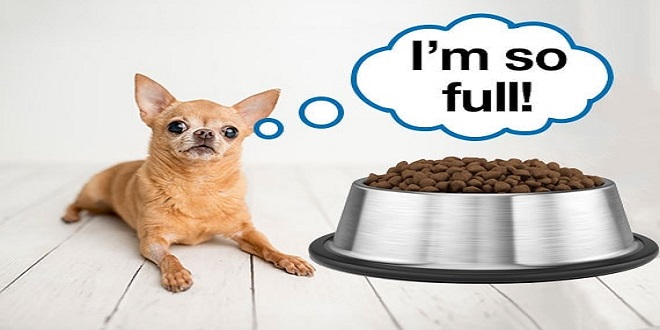What is fresh pet food and what makes it better?

There are many types of pet food available: raw, frozen-dried, gluten-free, pate and so on. There are so many options, and some of them look very unappetizing. It’s easy to get curious about the pre-cooked, real meat and vegetable concoctions that are shipped directly to your door when you see them on social media.
Fresh pet food is not like traditional kibble. It’s more expensive and less chunky than canned food. Fresh pet food is free from preservatives and can be kept in the refrigerator to preserve freshness between each serving. Although fresh pet food sounds more appealing than its name, we were curious if it was actually healthier for cats and dogs. Dr. Lindsey Bullen is a board-certified veterinary nutritionalist and works at the Veterinary Specialty Hospital of the Carolinas. Bullen has previously consulted with pet food manufacturers, but not with the services we have listed below. I also priced the most current options for fresh dog food subscriptions using a fictional 70-pound golden retriever,
What exactly is fresh pet food?
, a new breed of pet food brand that can be found in your local pet shop’s fridge, has helped pet owners commercialize their pet food options. There are many brands today, many of which are also available as subscriptions. You simply create a profile for your dog, fill out a questionnaire, and then you can customize your delivery frequency. The next thing you know, fresh pet food arrives at the door in dry ice.
My research revealed that there are more than 12 companies that sell fresh pet food for dogs and cats. Their cooking methods, ingredients and storage recommendations differ widely. Bullen says that the term “fresh pet foods” does not have a defined definition. It simply refers to pet food made with less or no preservatives. You could make it at home using boiled chicken and plain rice. Or, you could have it made in a factory with identifiable ingredients, packed without preservatives and frozen. We looked for brands that produce food at low temperatures and have a variety of meats, vegetables, and fruits.
But is it really better?
These pet food brands claim to be human-grade or that they don’t contain fillers, but it doesn’t necessarily mean they are better than traditional pet food. Pet food contains fillers, which are carbohydrates or grains such as wheat, soy or corn that provide your pet with nutritional value. Preservatives can extend shelf life, taste, and smell of pantry pet food. They are usually tested by the FDA and other governing bodies to ensure that the food is safe for your pet.
According to the Association of American Feed Control Officials, is considered “human-grade food”. means that all ingredients must be safe for human consumption. Bullen explained that feed grade can be described as “suitable to animal consumption”. However, this distinction is not much more than marketing when it comes to dogs who enjoy eating leftovers from the trash. Bullen stated that there are many things that could make food feed-grade rather than human-grade and that wouldn’t cause any harm to the animal in any way. One prime example of “feed-grade” would be poultry liver, spleen or kidneys. However, it would not contain feathers or feet.
Marketing claims are not enough to determine the caloric density of a dog’s diet. While each service may “customize” the amount of food your dog eats, it’s not the only thing that matters. Bullen cautioned that “just looking at their portion sizes doesn’t necessarily give you an accurate idea of how many calories they are getting.” It’s really going to be, you know? Are they maintaining weight, gaining weight or losing weight?” Bullen said. She also pointed out that the mark of a good program was the ability to adjust. The caloric density rate of fresher diets is lower than that of kibble diets. This is similar to the difference in calories between a cup or fresh fruit and a cup/cup of dried fruit. Bullen estimates that most kibble diets have a range of 3.2 to 4 kilocalories/gram (91-128 kilocalories/ounce). The fresh pet food diets we tested ranged from 1.2 to 4.75 kilocalories/gram. Although grams and kilograms may not be the American standard of measurement, they are used to calculate kilocalorie amounts. The difference in water content in each food causes this discrepancy. Follow the feeding guidelines to ensure your pet is properly fed.
It is best to consult your vet before making any changes to a pet’s diet. There is no one-size-fits all solution to your dog’s food needs. Dogs are different in how they process food. “Fresh pet food diets are nutritionally inferior. Bullen stated that it will depend on the pet’s needs and the client’s individual diet.
Here are some of the top direct-to-consumer pet food companies. These options are based on Bullen’s experience, interviews with each company and deep dives into third party reviews. I also compare each site’s pricing model and shipping availability. I have tried many different brands with my dogs, and the companies that we recommend are excellent options for anyone interested in fresh pet food.
The Farmer’s Dog
The Farmer’s Dog Freshly prepared, human-grade meals are available that pet owners can eat. According to the company, it does not use “feed-grade ingredients” and all ingredients are responsibly sourced from local farms. Pet owners don’t have to touch raw food because it is prepared at low temperatures. The food arrives frozen. All meals should be kept in the freezer, then thawed in a refrigerator before being served. Each Farmer’s Dog pack contains multiple portions. You can freeze multiple portions of the Farmer’s Dog food to avoid any leakage when it is being stored in the refrigerator. Rubbermaid TakeAlongs Container, as I do.
Start price:$2 per Day ($12.96/day for a 2-year-old, 70-pound golden retriever).
Recipes:turkey. Beef. Pork
Kilocalories per ounce: 1,170 kcal/kg (turkey); 1,530 kcal/kg (beef); 1,390 kcal/kg (pork)
Delivery frequencycustomizable through customer service; ordered to arrive before your food runs out
Ships to:48 Contiguous States
Guarantee policy or return policy:refunds are available
Nom Nom
Nom Nom A veterinary nutritionist is on staff, who ensures that the recipes are prepared according to AAFCO standards. This industry standard is for pet food. However, AAFCO does not have the same governing body as the FDA or USDA. Bullen has not reviewed Nom Nom but said that the fact that there is a full-time veterinarian nutritionist on staff is a positive sign about the product’s nutritional value. The meals should be thawed in the refrigerator before being eaten. Each meal comes individually packaged so make sure you have enough freezer space. Nom Nom offers seven free back-up meals with every order. This is a great bonus to stock your fridge in the event of delayed delivery.
Start price:$3 per Day ($9.69/day for a 2-year-old, 70-pound golden retriever).
Recipes:turkey and chicken, beef, pork
Kilocalories Per Kg:1,479 (turkey); 1,255 (chicken); 1,239 (beef); 1,246 (pork); 1,246 (kcal/kg)
Delivery frequency every two weeks or every 4 weeks
Ships to:48 Contiguous States
Guarantee or return policy: No returns but Money-back guarantee.
Ollie
Ollie Follow these recipes AAFCO Standards The company claims that it sources its meats from Australia and the US. You can freeze the meals once they arrive. Unopened meals can be kept in the refrigerator for up to 14 days. Each package may contain multiple meals depending on what your pet’s feeding instructions say. Once you have opened the package, keep it in the refrigerator until you are done. Ollie includes a scoop and a storage container with every order. This will help to keep the opened packages fresh.
Spot & Tango
Spot and Tango Fresh kibble (UnKibble), and fresh food are sold. Fresh food is human-grade and contains fruits, vegetables, meats, grains, and any additives or preservatives. Fresh kibble is prepared in a vacuum chamber at low temperatures. It is then dried and resembles traditional dog kibble. Fresh kibble should not be kept in direct sunlight and stored in cool, dark places for at least three to four weeks. Fresh food should be individually packed and frozen immediately after delivery.
Women Delusion Calculator Women have long been the subject of stereotypes and misconceptions that have had a significant impact on society. These myths have perpetuated gender inequality and have shaped the way women are perceived and treated in various cultural and social contexts. By busting these myths, we can foster a more inclusive and equitable society that recognizes and respects the diverse experiences and contributions of women.

